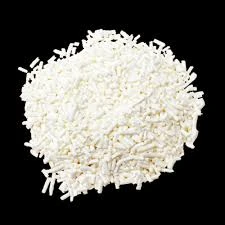
Exploring the Impact and Safety of E162 Food Additive in Our Diets
An Overview of E162 Food Additive A Natural Coloring Agent
In the modern culinary landscape, the use of food additives has become commonplace. Among a myriad of additives, E162, commonly known as beetroot red or betanin, stands out due to its natural origin and vibrant hue. Derived from the roots of the beet plant (Beta vulgaris), E162 is a highly regarded coloring agent that not only enhances the aesthetic appeal of food products but also offers several nutritional benefits.
Origin and Composition
Beetroot red is extracted from the beetroot, a vegetable that is rich in nutrients and antioxidants. The pigment responsible for the characteristic red color of beetroots is known as betacyanin. This compound is stable under acidic conditions, making it suitable for a variety of food applications. The extraction process involves washing the beetroots, slicing them, and then using a solvent to separate the betanin from the plant material. The final product can be either powdered or in liquid form, allowing for versatility in its use across different food types.
Applications in Food Products
E162 is widely utilized in various food products ranging from beverages to confections. Its ability to produce a striking red color makes it an ideal choice for products such as fruit juices, smoothies, jams, jellies, and even dairy products like yogurt. In the confectionery industry, beetroot red is often employed to enhance the appearance of sweets and candies, providing a more natural alternative to synthetic colorants. Additionally, it is used in processed foods, sauces, and dressings to add visual appeal and consumer appeal without the health concerns often associated with artificial additives.
Nutritional Value and Health Benefits
e162 food additive

One of the significant advantages of using E162 over synthetic colorants is its nutritional profile. Beetroot is known for its high content of vitamins and minerals, including vitamin C, potassium, and folate. Moreover, the betalains present in beetroots, including betacyanins, exhibit antioxidant properties that may help combat oxidative stress in the body. Studies suggest that regular consumption of beetroots may contribute to improved cardiovascular health, enhanced endurance, and increased stamina.
Furthermore, since beetroot red is derived from a natural source, it is generally recognized as safe for consumption. It is particularly appealing to health-conscious consumers and those seeking clean-label products, as the trend toward natural additives continues to grow in importance within the food industry.
Regulatory Status
E162 is approved for use in various countries around the world, including the European Union, where it is classified as a permitted food additive. The European Food Safety Authority (EFSA) has assessed its safety and established acceptable daily intake levels, ensuring that consumers can enjoy products containing beetroot red without health risks. Conversely, some regions may impose restrictions on its use due to specific regulations governing food additives, making it essential for manufacturers to be aware of regional guidelines.
Conclusion
As consumers increasingly gravitate toward natural and health-conscious food options, E162 stands out as a compelling choice for food manufacturers. Its vivid color, derived from a nutrient-rich source, along with its safety profile, positions it favorably within the context of food additives. With ongoing research highlighting the numerous health benefits associated with beetroot consumption, the role of E162 in the food industry is likely to grow. As a result, beetroot red not only enhances the visual appeal of food but also aligns with the evolving preferences of modern consumers seeking authentic and wholesome ingredients in their diets. In conclusion, the inclusion of E162 in various products exemplifies a shift towards more natural food formulations, catering to the demand for health-focused choices without compromising on quality or taste.
-
Pure Sodium Dichloroisocyanurate Dihydrate | Powerful DisinfectantNewsAug.29,2025
-
Industrial Chemicals: Quality & Purity for Every IndustryNewsAug.28,2025
-
Nitrile Rubber Honoring Strict Production StandardsNewsAug.22,2025
-
Aspartame Ingredients Honoring Food Safety ValuesNewsAug.22,2025
-
Fertilizer for Balanced Plant NutritionNewsAug.22,2025
-
Cyanide Gold Processing with High Purity AdditivesNewsAug.22,2025
-
Formic Acid in Textile Dyeing ApplicationsNewsAug.22,2025
Hebei Tenger Chemical Technology Co., Ltd. focuses on the chemical industry and is committed to the export service of chemical raw materials.
-

view more DiethanolisopropanolamineIn the ever-growing field of chemical solutions, diethanolisopropanolamine (DEIPA) stands out as a versatile and important compound. Due to its unique chemical structure and properties, DEIPA is of interest to various industries including construction, personal care, and agriculture. -

view more TriisopropanolamineTriisopropanolamine (TIPA) alkanol amine substance, is a kind of alcohol amine compound with amino and alcohol hydroxyl, and because of its molecules contains both amino and hydroxyl. -

view more Tetramethyl Thiuram DisulfideTetramethyl thiuram disulfide, also known as TMTD, is a white to light-yellow powder with a distinct sulfur-like odor. It is soluble in organic solvents such as benzene, acetone, and ethyl acetate, making it highly versatile for use in different formulations. TMTD is known for its excellent vulcanization acceleration properties, which makes it a key ingredient in the production of rubber products. Additionally, it acts as an effective fungicide and bactericide, making it valuable in agricultural applications. Its high purity and stability ensure consistent performance, making it a preferred choice for manufacturers across various industries.





